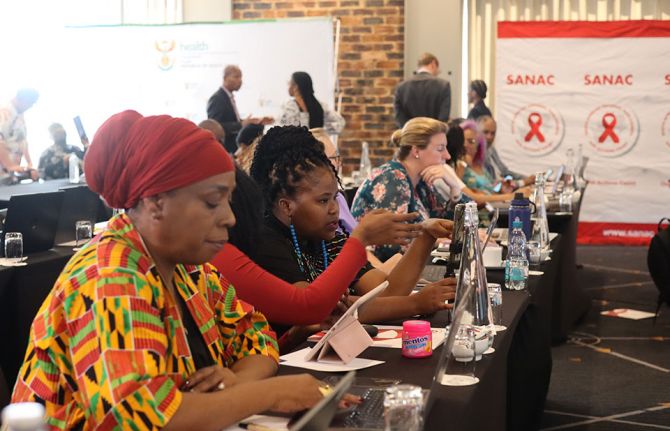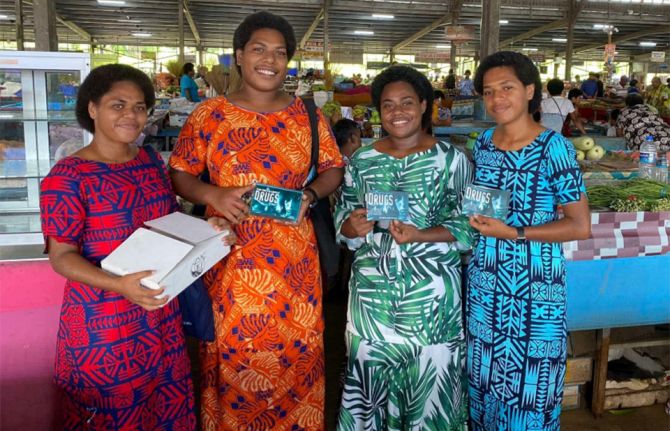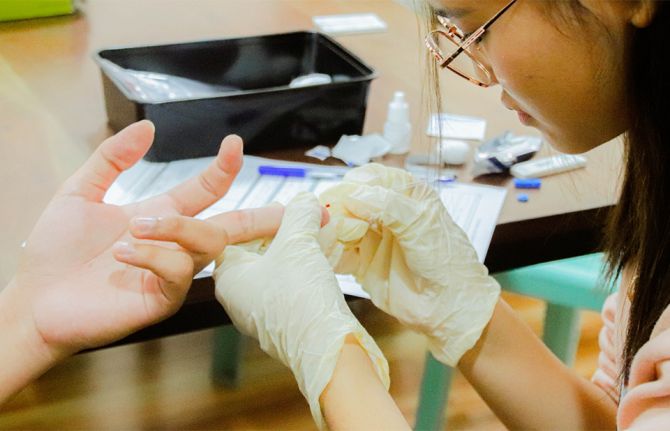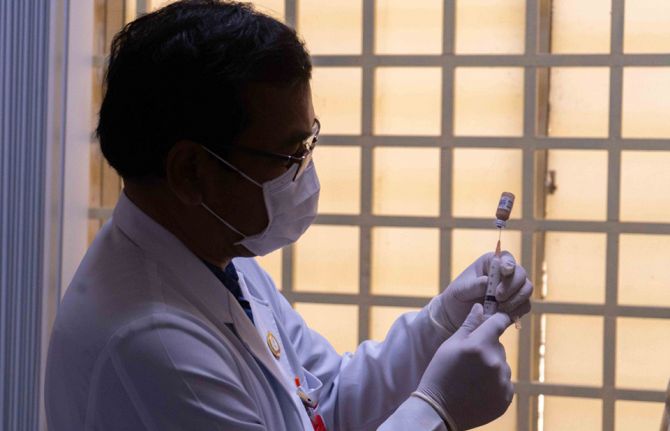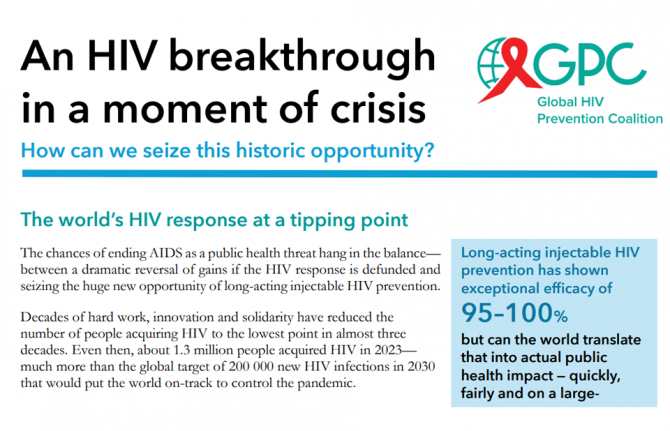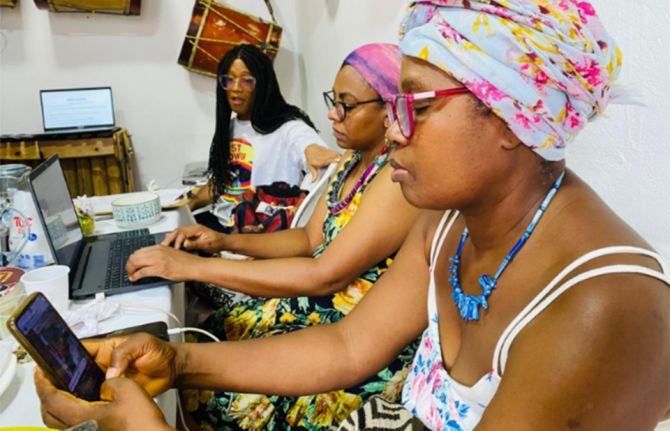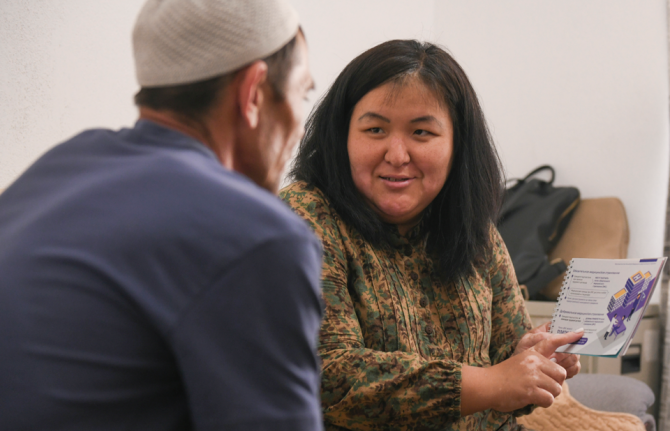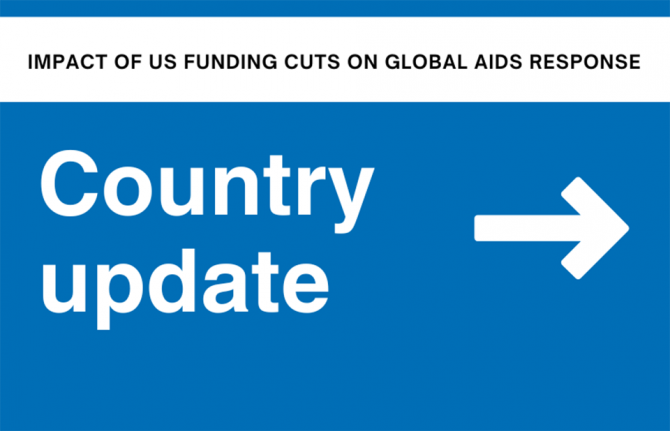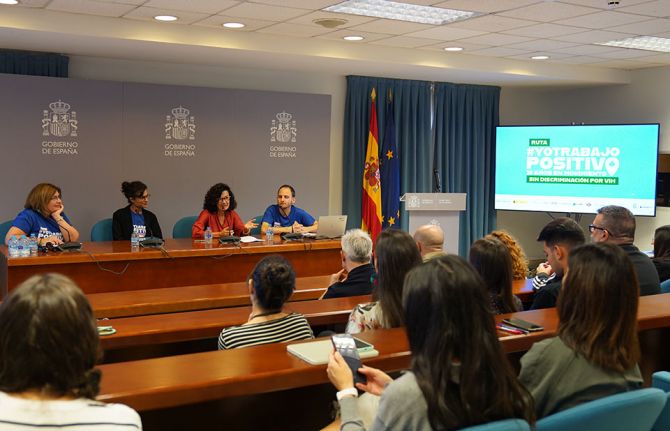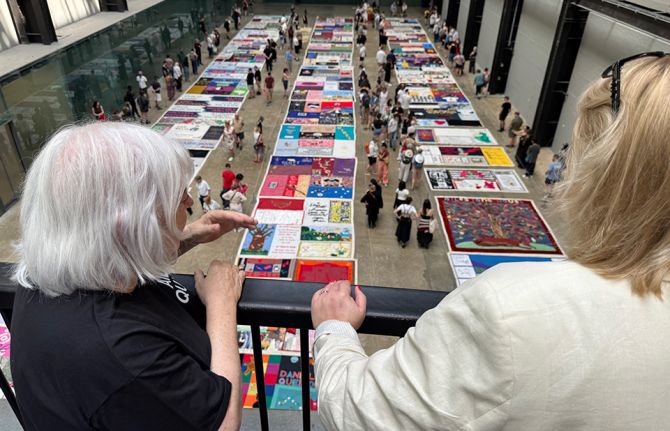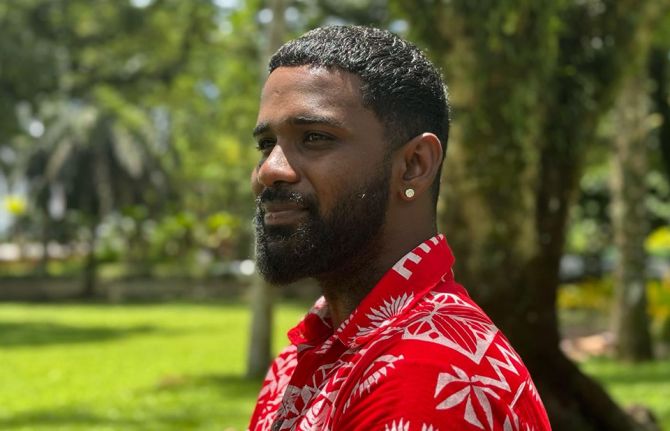
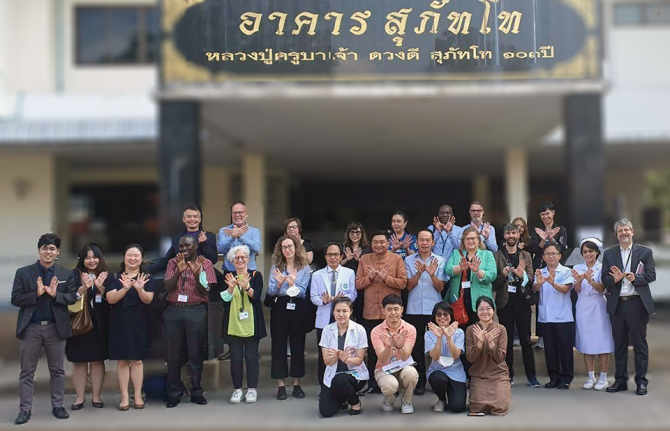
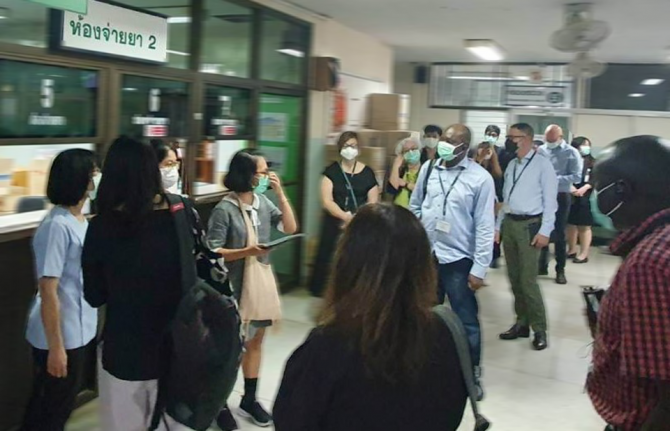
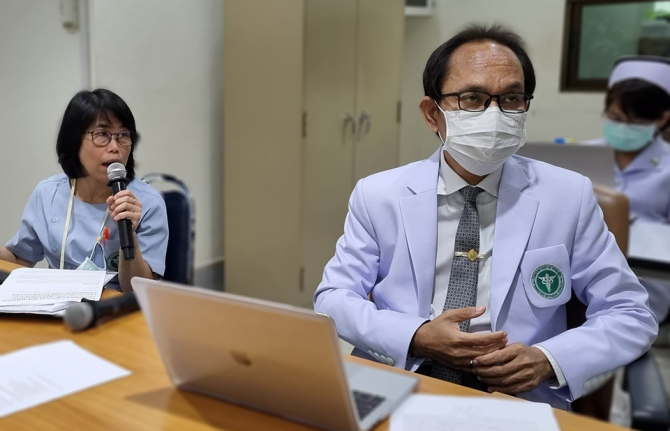
Feature Story
The power of bringing together government and community HIV services
15 December 2022
15 December 2022 15 December 2022The Sanpatong Hospital in North Thailand has reinvented and refined its HIV programme for more than three decades. It began attending to people living with HIV in 1989, and in 1996 started offering antiretroviral treatment.
“We have patients who have been with us for 30 years,” says Dr Tawit Kaewprasert, Deputy Director of Provincial Public Health Office and Director of Sanpatong Hospital.
In the last five years the hospital has not had a single case of mother-to-child HIV transmission. An impressive 96% of people on treatment who received viral load tests there this year were virally suppressed, with 98% of those patients being undetectable. Management speaks about the 92% retention rate for clients who were on treatment in 2022 in terms of how those results can be improved.
“We have not achieved that target just yet,” Dr Manusin Kongka says, referring to the proportion of people who stayed on antiretroviral therapy. “But we can reach the target and even achieve beyond 95%.”
The team even aims to achieve 100% viral suppression among people who have been on treatment for at least five years. The current 96% result isn’t considered to be good enough.
This ambitious goal-setting flows from the National HIV Policy and Thailand’s commitment to end AIDS by 2030 through a well-articulated strategy to reach, recruit, test, treat and retain people in care, while also working to prevent new infections.
Of course the strategy relies heavily on Sanpatong and institutions like it. This 130-bed facility boasts a central lab that serves surrounding hospitals in Chiang Mai, Lamphun and Mae Hong Son with HIV diagnosis, CD4, viral load monitoring and some opportunistic infections testing.
Their approach includes the adoption of HIV response best practices including PrEP, index testing and same-day treatment initiation.
“Patients can start treatment before they even get their CD4 result,” Dr Kongka explained.
All staff have received anti-stigma training as well as orientation around the U=U, undetectable = untransmittable, initiative. The facility uses a differentiated approach for antiretroviral treatment delivery. Depending on their health status, some clients can collect multiple month dispensing at district health promoting hospitals while others can receive their medicine by mail.
But a major key to Sanpatong’s success is the linkages it has made with groups of community-led organizations to drive case detection, linkage to care, psychosocial support and the monitoring of services. The Hospital works with Mplus, CAREMAT and FHI360 on prevention, testing and retention in care. Organizations of people living with HIV run support groups. The Community Led Monitoring team even helps primary care nurses to contact patients who have been lost to follow up and conduct home visits. The people living with HIV network collaborated with key community-based organizations in Chiang Mai to conduct community-led monitoring to improve the quality of HIV services at the Sanpatong hospital.
“Our collaboration with community organizations increases awareness about HIV, improves quality of care and access to care, decreases the waiting in community clinics and increases continuity of care for HIV patients,” said Ms Sineenuch Suwansre, HIV Coordinator.
This close collaboration with communities is enhanced by the Thailand Government’s move to integrate HIV services into the Universal Health Coverage scheme. Now certified organizations and lay HIV service providers can access domestic financial support within the national health infrastructure.
“Universal Health Coverage is a mechanism for the sustainable financing of HIV prevention as well as sustainable financial support to key population- and community-led health services. The Thai government’s move to fund Community-led Health Services as an element of the mainstream public health system is a win for people living with HIV, for HIV prevention and for sustainability,” said UNAIDS Thailand Country Director, Patchara Benjarattanaporn.
Our work
Region/country

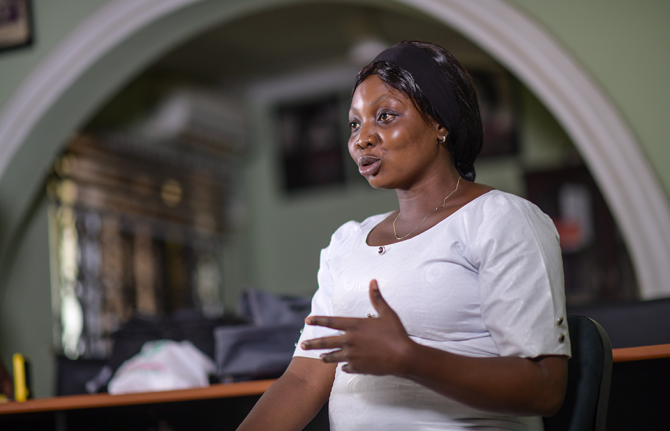
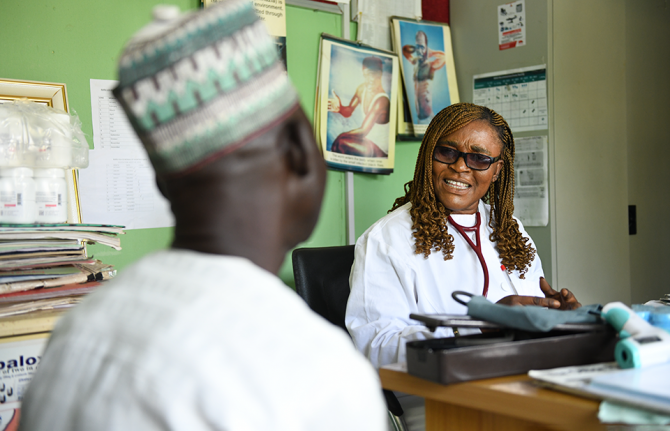
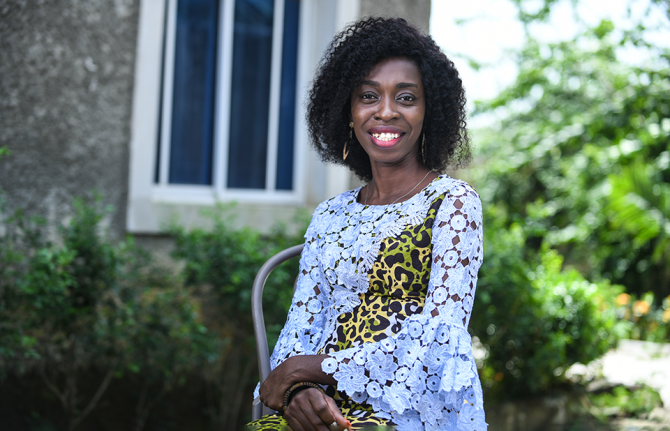
Feature Story
Dangerous inequalities and overcoming them
18 November 2022
18 November 2022 18 November 2022Grace Amodu was 7 years old when she found out she was living with HIV. Until then she had been told to take pills daily for malaria or for headaches but she grew tired of it. Screaming and kicking she told her brother that she was going to stop taking her medicine and that she wanted answers. Her mother took her aside and explained that she was born with HIV and that the treatment would keep her healthy like other kids.
She remembers crying a lot and refusing to leave the house.
To keep her from spiraling out of control her mom encouraged her to join a support group, which she says turned her life around.
As she proudly says she has two children who are both free of HIV. Taking her medication at the same time every day throughout her pregnancy and afterwards meant she was not going to transmit HIV to her babies. "When you take medicine it suppresses the virus and even though I feared my children may have HIV they both tested negative.”
She credits International Community of Women Living with HIV (ICW) Nigeria chapter for giving her hope and confidence.
“ICW was like a backbone, they were there for me like the colleagues, everyone around was standing for me, even the boss, Assumpta Reginald, was like a mother figure to me,” Ms Amodu said. “She held me by the hand telling me that, ‘You can do this and you can become a better person.’
As a result, Ms Amodu has become an HIV advocate and a community pharmacist.
"We go to the hospital and get medicine for people and give them to patients who are maybe not able to access their drugs because they have no transport fare or they are far away or due to the stigma in the hospital they don’t want to come to have nurses and doctors shout at them so we take these drugs down to their doorstep and give it to them,” she explained.
More than 90% of people living with HIV in Nigeria are on antiretroviral medicine but stigma and discrimination are still rampant.
For Ms Amodu the solution is simple. Give people the right information about HIV to break the cycle.
“We need to make people understand that you being HIV positive is not making you less of a human, you are also a human being and you deserve equal rights,” the 28-year-old said.
Stella Ebeh knows all about stigma. She started volunteering in 2004 helping people living with HIV like herself. Then she started working in a health center and became a public health officer. Over the years Ms Ebeh said she has cared for more than 7000 patients and also became a mentor-mother (giving HIV advice to pregnant women and counselling), and an anti-stigma ambassador.
She is very proud of overcoming stigma and as she called it, “walking on it,” but despairs that she is still not a full-time staff member. People living with HIV are very capable and yet we are often overlooked she said, adding, “I work like an elephant but eat like a rat.”
Patients pour in and out of the Marabara health centre on the outskirts of Abuja all day. Ms Ebeh goes from one person to another. She lingers a while with a pregnant woman who also prepares lunch on the premises, Ngozi Blessing.
Ms Ebeh insists on pregnant women taking all the precautions they can to give birth to healthy babies. Her husband and their five children are all HIV negative. Sadly, in Nigeria this is an exception.
Vertical transmission is 25% in the country - that is when a mother passes on the virus to her child during pregnancy or breastfeeding- a record high in the region.
UNAIDS Country Director Leopold Zekeng says this is unacceptable. For him it is a demonstration of the inequalities in terms of access to services.
“Two thirds of the 8 million women who get pregnant every year in Nigeria do not have access to PMTCT (prevention between mother to child transmission of HIV) services during ante-natal care,” he said.
This is why Nigeria and UN organizations along with other partners are spearheading an effort to end AIDS in children.
Dr Akudo Ikpeazu, Director and National Coordinator, National AIDS and STDs Control Programme (NASCP) said that in the last 2 years they have done an enormous amount of work first trying to get a mapping to understand where all the women are having babies and where they receive ante-natal care if at all.
“A lot of them are in birth homes, they go to traditional birth attendants and many deliver at home and receive services at home and so we have a got new strategy which aims to find them where they are, ensure that they are treated, ensure that we can find them first, ensure that we can test them, link them into treatment and count every single one that has gained access to care,” she said.
In other words, find all, test all, treat all and report all which happens to be Nigeria’s slogan encapsulating their strategy.
Once that vertical transmission tap, as she called it, is closed, then there will be a smaller pool of children to look after regarding treatment. Dr Ikpeazu said Nigeria intends to put in place an acceleration plan to have more children and adolescents on treatment and push for them to stay on treatment.
For Toyin Chukwuduzie, Director of Education as a Vaccine (EVA), HIV is one part of a larger equation.
“We see the number of unintended pregnancies, we see the burden of HIV especially among adolescent girls, we also see the sexual and gender based violence happening in our society so these things are in existence, these things are happening, yet adolescents and young people don’t have the information they need to make decisions whether we are talking about schools, whether we are talking about health facilities or even in the homes where there are other adults so there are huge gaps,” she said.
The 35-year-old works with young people to fill those education gaps and build support. She is convinced that a main driver of these gaping holes are inequalities, one in particular.
"I believe gender inequality is the root cause of many other inequalities so if had a magic wand gender inequality would be the one I would address the first because it’s key,” she said. “Addressing gender inequality is key to unlocking potential, potential of women and girls everywhere in this country.”
Hammering in her point, she added that despite everyone stressing the fact that young people are the force of the future Ms Chukwudize said, "If you are not providing that safe environment, if they are not healthy, if their dreams and aspirations are thrown off the path, how do they become the future that we want to see.”
Region/country

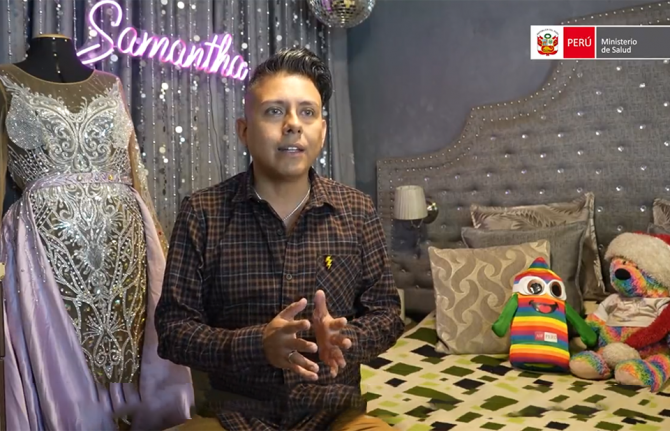
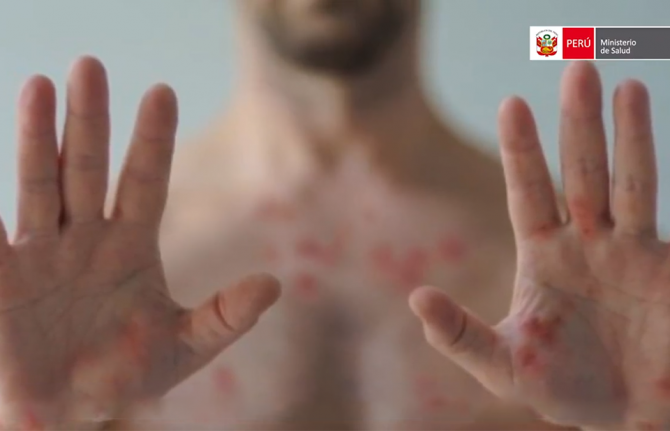
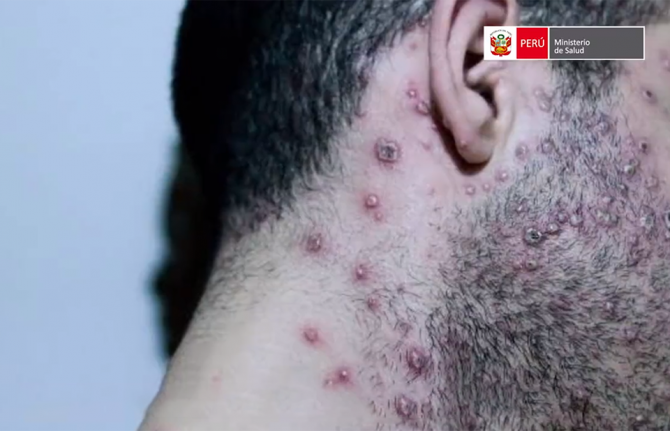
Feature Story
Communities at the centre of an orchestrated emergency response to monkeypox in Peru
10 October 2022
10 October 2022 10 October 2022"My name is Jonathan. Today I'm not going to tell you how I got monkeypox, but how complicated it is to carry this disease", says the activist and crossdresser Jonathan Albinagorta. He is also known as Samantha Braxton, one of the influencers supporting the Ministry of Health in its video campaigning on monkeypox prevention in Peru.
With more than 2300 confirmed cases of Monkeypox by the end of September, Peru had the world's highest infection rate per million people, according to Our World in Data, a collaborative online platform led by researchers at the University of Oxford.
The response to the outbreak in Peru was set up under the leadership of the national HIV strategy team, which developed a plan to raise awareness of the disease. Its public real-time data dashboard, inspired by the COVID-19 response, provided concrete evidence for the rapid of an awareness campaign. However, the same data, mainly from HIV-specialized centres, also had the unwelcome side-effect of increasing stigma and discrimination for some groups of people.
"The data created a biased sample at the beginning. Evidence showed that people living with HIV and some key populations, such as gay men, were among the most affected in Peru", recalls Andrea Boccardi, UNAIDS director for Peru, Bolivia, Ecuador and Colombia. "But these are the very people who have the culture of going to the HIV-friendly services for consultations, for periodical examinations and HIV treatment."
Referral Centers for Sexually Transmitted Infections, known as Cerits, and Periodic Health Care Units provide HIV services for Peru's most vulnerable and key populations. "These groups of people do not go to hospitals where they tend to suffer discrimination. They go to these centres, where the greatest number of monkeypox diagnoses came from at first", explains Boccardi.
Experience in dealing with the HIV pandemic shows that data must be accompanied by adequate information-sharing to the public and impacted groups in a non-stigmatizing way. An inclusive approach and the correct use of language are key to engage with communities so that they become an integral part of the response instead of being driven away.
UNAIDS supported the country in quickly setting up a strategy that included meetings between health officials and civil society representatives. Community leaders also contributed by reviewing messages coming out of the ministry of health. People also received training to act as spokespeople in media interviews.
“Often, the communication from the ministry of health ends up being very institutional or quite distant. Something that the community cannot fully digest”, says Mauricio Guitierrez, a GayLatino network activist. “We elaborated friendly visual materials for dissemination. It is important to translate and personalize the information for people and that was what we tried to do by supporting the ministry in these campaigns.”
”As well as informing and clinically diagnosing the most at-risk populations in saunas, hotels, and other sites, monkeypox working group convinced mayors to keep these establishments open and to use them as critical platforms for the dissemination of relevant information on monkeypox directing people to the information and services made available.”
In Peru, LGBTIQ+ people and people living with HIV are the most discriminated against, with 71% and 70% of them, respectively, reporting to have suffered discrimination at some level, according to the National Human Rights Survey released in 2021 by the Ministry of Justice and Ipsos Peru.
“Out of fear of stigma and of what people will say, a lot of us don’t ask and fall into the same trap of ignorance”, says Albinagorta. “It was great that the Ministry placed QR codes in LGBT establishments, for example.”
Alliances with telecom companies and social networking apps, such as Grindr, created opportunities to inform the most vulnerable populations through an estimated 40 million messages focused on monkeypox prevention and treatment. Former COVID-19 spaces were also used for the 21-day isolation period for people not able to comply with thisrequirement, including migrants and refugees.
Despite some early signs of stabilization, the Pan American Health Organization (PAHO) said recently that it is too early to proclaim victory. It called on countries "to intensify the response actions, prioritizing detection, surveillance and community engagement to reduce new cases and put an end to the outbreak in the region." The United States still accounts for more than half of cases, but rapid increases have been witnessed in Brazil, Peru, Colombia, Mexico and Chile in the past month.
The Ministry of Health of Peru is purchasing vaccines through the PAHO Strategic Fund, but the total number of vaccines available for the entire region is 100 000. The main challenges are the criteria for prioritization as the expected number of vaccines per country will be no more of 5000.
"Many people contacted me after my first video for the ministry of health in Peru. For those who are suspicious, it inspires more confidence to approach someone like me, who has had monkeypox and talks freely about it, than to go to a hospital, an institution or the ministry itself, " says Samantha. "Of course, there are also haters. Some people believe that when a gay man shares that he has had monkeypox, he is stigmatizing himself. But that's not it.”
Region/country

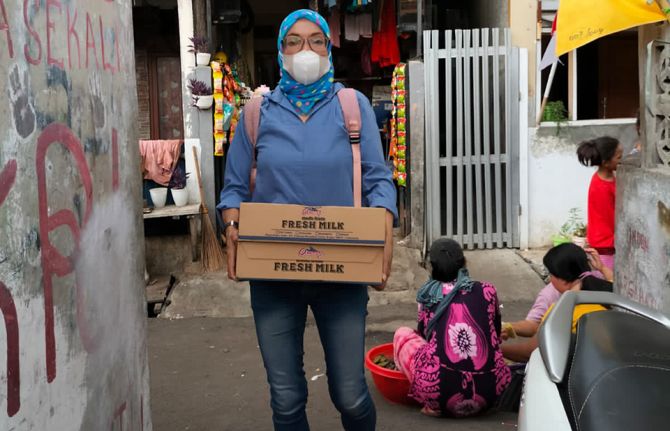
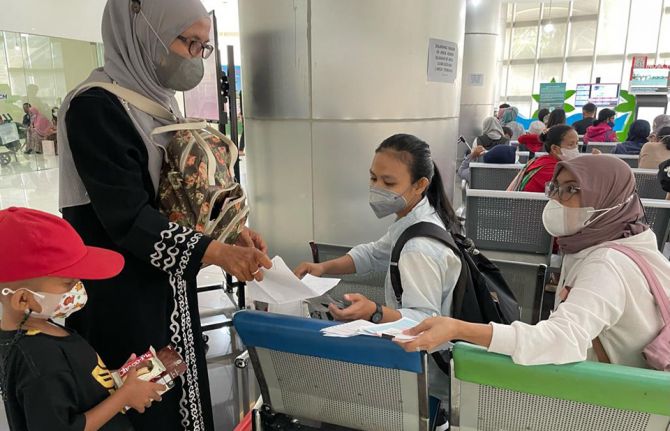
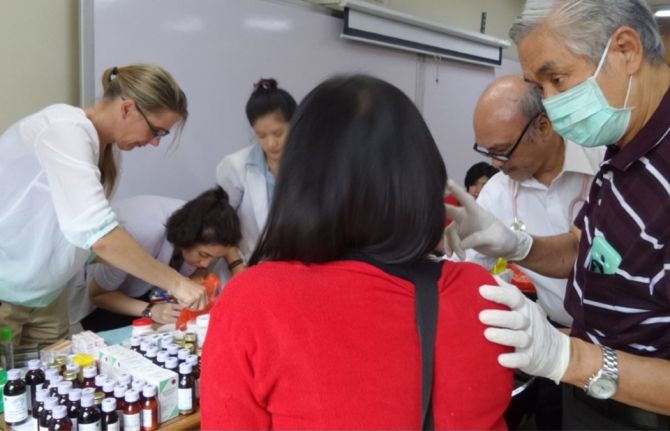
Feature Story
Indonesia: Helping one family at a time through Lentera Anak Pelangi’s One Child One life program
10 October 2022
10 October 2022 10 October 2022Estimates indicate that in Indonesia in 2021, only 25% of the 19,000 children living with HIV received life-saving antiretroviral therapy and 2,400 children died from AIDS-related causes.
Despite global scientific breakthroughs providing more effective treatment for adults and children, for many children living with HIV in Indonesia access to antiretroviral therapy remains elusive. Exacerbating the situation is the entrenched societal and gender inequalities that present barriers to women, adolescents and children to access quality prevention and care services.
With many competing priorities, national and local commitment of resources to scale-up efforts to eliminate vertical transmission of HIV and increase ARV coverage among children living with HIV remain limited. This has resulted in insufficient investment in community-based services for women, adolescents and children living with HIV.
To reduce AIDS-related deaths among children, and ensure children and adolescents living with HIV have access to high quality comprehensive care and support, Indonesia must expand community-based services and community-led programmes tailored to the needs of these very vulnerable yet often left-out groups.
Lentara Anak Pelangi (LAP), an organization that provides HIV services, including psychosocial support, for children and adolescents living with HIV in Jakarta has seen some successes through their One Child One Life program.
“We want these adolescents to be the next generation of positive leaders and influencers who inspire other teens living with HIV” said Prof. Irwanto, founder of Lentera Anak Pelangi.
The One Child One Life program provides disclosure and post-disclosure support, mental health assessment and care as well as education.
“Lentera Anak Pelangi has supported my daughter since she was very young. LAP’s in-person and online activities have been very helpful for her. Through Sekolah LAP, my daughter has started to learn how to build her self-confidence and open her mind to learn more things. I also learned the meaning of this illness and find friends facing the same struggle and fight to continue to be healthy,” Explained the mother of one LAP beneficiary.
“My son and I have been greatly helped by LAP’s education support. During the pandemic, we often received sembako (staple foods). My son loves to be part of LAP because he gets to meets other teens who share similar circumstances. We also receive information on how to provide care for our family,” another mother said.
Through the One Child One Life program, children living with HIV have been supported to suppress their HIV viral load, return to school and participate in youth support groups. LAP also supports children with special needs and supplemental nutritional support when required. However, their coverage remains small due to funding and human resource constraints.
“Science has made it possible to diagnose and treat HIV. We have come a really long way in 40 years. In Indonesia, we must eliminate vertical transmission of HIV and ensure that all children living with HIV access life-saving antiretroviral therapy and quality care including psychosocial support when needed.” said Krittayawan Boonto, the UNAIDS Country Director for Indonesia.”
UNAIDS Indonesia together with Lentera Anak Pelangi and other implementing partners continue to call for optimized investments in community-based services and community-led programmes for women, adolescents and children living with HIV.
Region/country


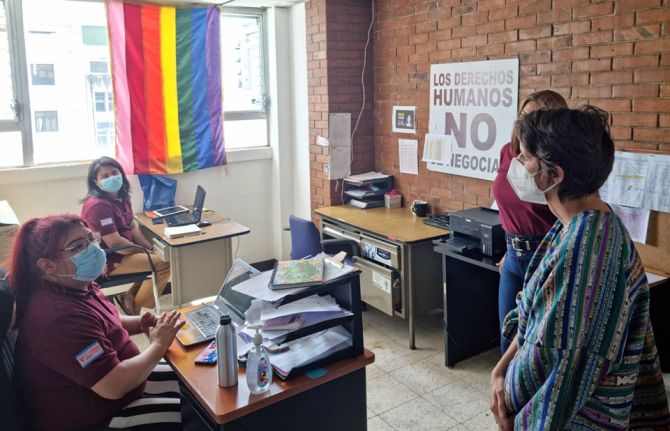
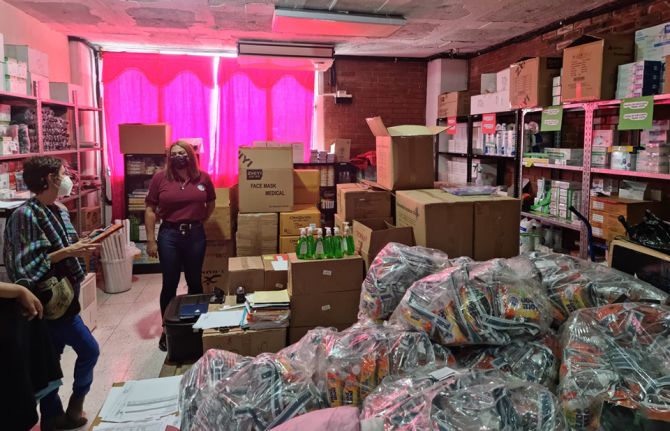
Feature Story
A beacon of hope in Guatemala
15 July 2022
15 July 2022 15 July 2022It was a proud day for Stacy Velasquez the Executive Director of OTRANS Reinas de la Noche in June as she opened the doors to the community clinic that had just been officially approved as a health post by the Ministry of Public Health and Social Assistance. This meant that a full-time doctor was now in position.
Around 40 transgender women and sex workers have come to the clinic since the doctor's arrival. The clinic has existed for several years, but with the approval by the Ministry of Health and financial support from the Global Fund and OXFAM, patients now have access to comprehensive care: HIV prevention and diagnosis; prevention, diagnosis and treatment of sexually transmitted infections; psychosocial counselling; medical consultations including hormone therapy; a laboratory service for sexual health testing and a pharmacy.
The clinic offers pre-exposure prophylaxis (PrEP), a biomedical intervention within the combination prevention approach, which refers to the use of antiretroviral drugs by HIV-negative individuals to reduce the risk of contracting the virus.
"In 2016, a comprehensive health strategy for trans people was approved with technical support from UNAIDS. It includes a manual of guidelines for the health care of trans people,” said Stacy. “The community clinic and this strategy are the fruit of the work of almost 18 years of advocacy by the trans community."
OTRANS contributes to the Centro de Documentación y Situación Trans de América Latina y el Caribe (CEDOSTALC), a community-based system for collecting information, monitoring and responding to human rights-related barriers faced by the transgender population in 26 countries in Latin American and the Caribbean.
In Guatemala, transgender women still face exclusion, discrimination, stigma, verbal and physical violence, criminalization, marginalization and a lack of recognition of their rights, resulting in a life expectancy of only 35 to 40 years old. The average life expectancy in the country is 74 years old.
During a visit to the clinic, UNAIDS country director, Marie Engel praised the work of the site and paid tribute to Andrea Gonzalez, the OTRANS legal representative who was murdered in 2021.
“In Guatemala, the HIV prevalence rate is 22.2% among the transgender population, compared to 0.2% for the general population,” said Ms Engel. “And although new HIV infections declined by 23% among all women between 2010 and 2019 globally, they have not declined among transgender women. And yet, transgender people have less access to HIV services than the rest of the population.”
Stigma and discrimination have a profound negative effect on the mental health of transgender people, which in turn can influence their vulnerability to HIV infection. Data reported to UNAIDS in recent years show that the percentage of transgender people who avoid seeking HIV testing due to stigma and discrimination ranges from 47% to 73%.
Region/country


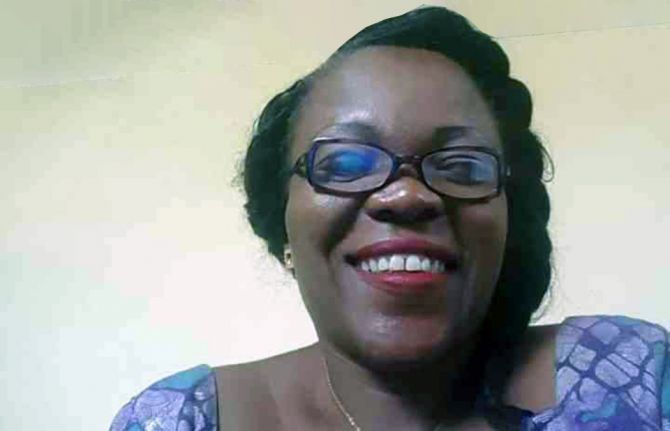

Feature Story
In the Democratic Republic of Congo, Thérèse Omari maintains her commitment to ending AIDS and providing a fulfilling and harmonious life for people living with HIV
28 July 2022
28 July 2022 28 July 2022"We are here, we are not giving up". These are the encouraging words of Thérèse Omari, an activist who has been involved in the fight against AIDS for more than 20 years within the Femme Plus organisation, of which she is the co-founder and National Director in the Democratic Republic of Congo.
Femme Plus, true to its motto "Positive Life", works to improve the quality of life of people living with HIV. "The objective is for our beneficiaries to live in harmony with themselves, with their environment and with their beliefs," explains Ms Omari.
To this end, the organisation provides psychosocial support to people living with or affected by HIV through counselling, care and support services. Femme Plus also carries out numerous activities in communities to free people living with HIV from the burden of stigma. "There is still a lot to be done to change behaviours towards people living with HIV," says Ms Omari. In the Democratic Republic of Congo, HIV-related stigma is still very present, especially in community settings. "Many people living with HIV say they no longer participate in family gatherings and other events fearing discrimination. It is therefore essential that people who come to Femme Plus feel that they are considered normal people with rights and obligations," she explains. In order to raise awareness, the organisation runs workshops to provide communities with the knowledge to better support people living with HIV, without isolating them or treating them differently.
Ms Omari also deplores the persistence of stigma and discrimination in health care settings despite the numerous HIV-related trainings for health care workers. In particular, she receives testimonies from pregnant women who have tested positive for HIV in one facility and wish to give birth in another, fearing of being stigmatised and treated differently. This is problematic as it can be detrimental to the provision of appropriate care for the mother and baby.
Ending discrimination and ensuring that the rights of people living with HIV are protected is therefore one of Femmes Plus' priorities to help them assert themselves and make the right choices about their health. "We encourage people living with HIV to empower themselves, to speak up about their condition, for their own well-being," says Ms Omari.
Ms Omari also raises other obstacles to the AIDS response. The lack of access to prevention and treatment, and the low rate of people with an undetectable viral load, are among the shortcomings of the fight against HIV in the Democratic Republic of Congo. "Not everyone has access to testing. There are still people with HIV who live in anonymity," warns Ms Omari.
To overcome this gap, Femme Plus works with community leaders to teach them how to stay healthy with HIV. Among other activities, it also engages with pregnant and breastfeeding women, providing them with the knowledge to protect their babies and thereby stop vertical transmission.
"As long as there are people who do not know their HIV status, who do not have access to treatment and who have not reached an undetectable viral load, the fight of Femme Plus will remain meaningful," insists Ms Omari.
She concludes by pointing out that the fight against AIDS in the Democratic Republic of Congo is taking place in a context where resources are limited. "The local population must be involved in psychosocial care and prevention activities to make HIV an electoral issue," she explains. While waiting for more substantial funding from the State and better traceability of funds, community-led services have a crucial role to play with people living with HIV. They are at the heart of the fight against AIDS, advocating for access to prevention and life-saving care, calling for respect for human rights and addressing the specific needs of their beneficiaries. Their support is therefore pivotal in meeting the challenges of the HIV response and ending AIDS by 2030.
Region/country

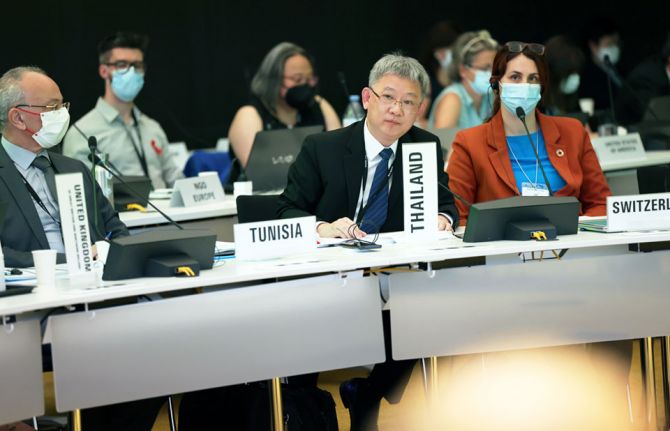

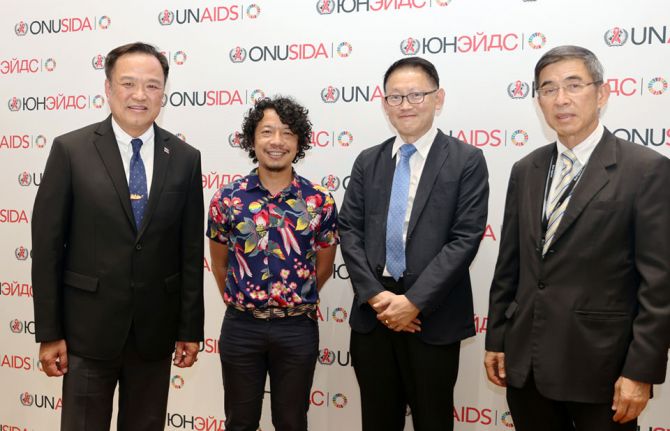
Feature Story
Ensuring sustainability of community-led HIV service delivery in Thailand
24 June 2022
24 June 2022 24 June 2022During the 50th Programme Coordinating Board meeting held in Geneva, Thailand announced formally funding community-led health services (CLHS) as public health services. The National Health Security Board of Thailand has approved HIV prevention, treatment, and care to be directly reimbursed by the Universal Health Coverage scheme.
“This is a key milestone for Thailand regarding sustainable community-led service delivery and sustainable financing for community-based organizations. It is a model for the region and countries globally,” said Winnie Byanyima, Executive Director of UNAIDS.
The role of community-led organizations in providing HIV services is well recognized as an essential component leading to ending AIDS by 2030. Using people-centered, rights-based and stigma-free approaches by and for key population community and people living with HIV has shown to lead to an increased uptake of essential HIV services.
Since 2016, Thailand has started to fund project-based community-led HIV services through the Universal Health Coverage scheme. The allocation of the national budget has increased over time to support community-led organizations (CLO) working with people living with HIV and key populations.
However, until now, year-to-year contracting mechanisms led to operational gaps affecting the provision of HIV services. The formal recognition of community-led health services under the UHC scheme will allow for faster access to funding, continuity of service delivery, and increase CLOs capacity for greater coverage of HIV services.
“To reach the ambitious goal of ending AIDS, we have partnered with community-based organizations who play a vital role in HIV service provision to hard-to-reach populations and marginalized communities,” said Anutin Charnvirakul, Deputy Prime Minister and Minister of Public Health of Thailand.
Organizations led by communities who are eligible to provide HIV and STI services in their communities can register as service providers under the National Health Security System. To get this recognition, they need at least one year of service experience and require an accreditation by the Ministry of Public Health or other certified bodies. Community health workers with relevant experience also have to be certified by a government agency or accredited organization.
The UNAIDS Thailand office has been working with different partners to support the scale-up of community health workers' certification and other accreditations as well as strengthening the sustainability of the community response.
In attendance at the 50th PCB were Dr Jadej Thammatacharee, Secretary General, National Health Security Office, Dr Opart Karnkawinpong, Director General, Department of Disease Control, Ministry of Public Health, Dr Suwit Wibulpolprasert, Advisor to the Office of the Permanent Secretary, Ministry of Public Health and the entire three day meeting was chaired by H.E. Mr Anutin Charnvirakul, Deputy Prime Minister and Minister of Public Health.
Region/country

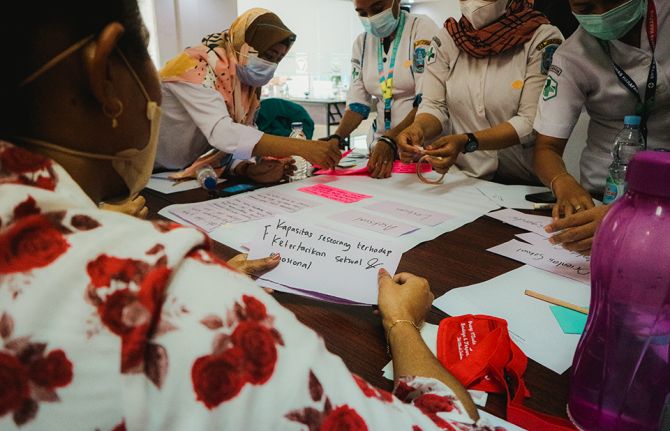
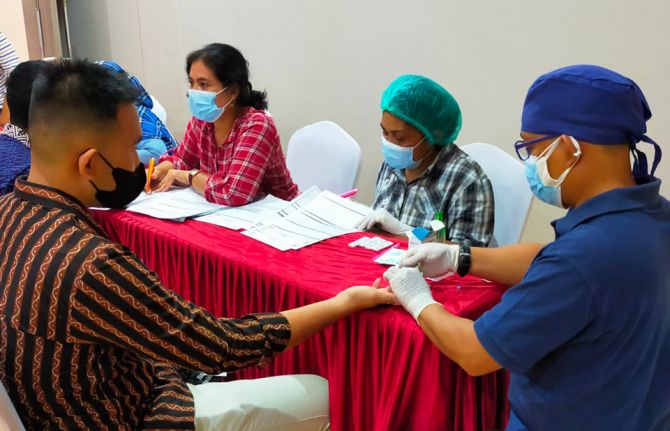
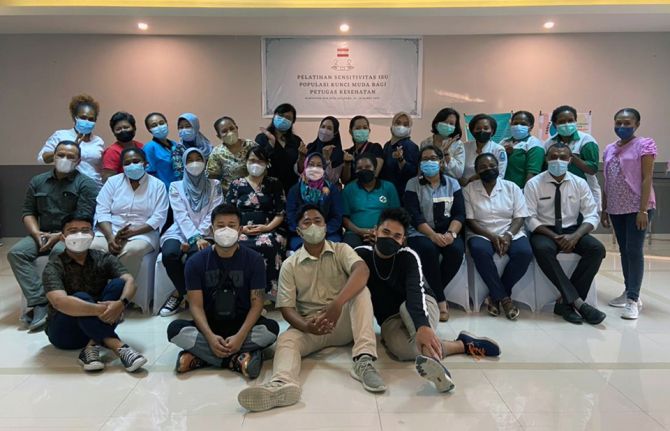
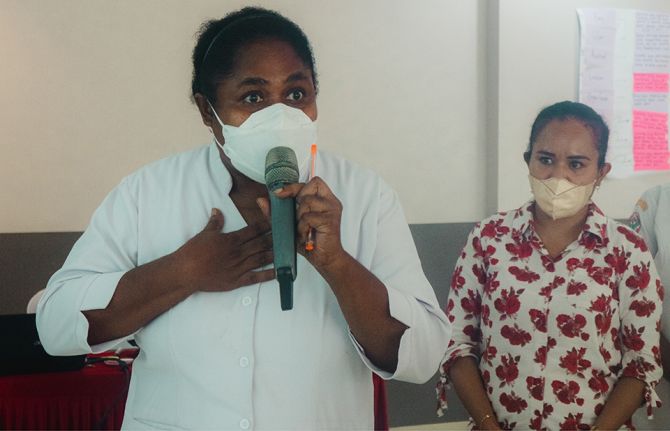
Feature Story
Training health-care workers in Indonesia to improve HIV services for young key populations
30 March 2022
30 March 2022 30 March 2022“Young people here don’t regularly access HIV services. I really want to invite my friends to get tested, but they are all so afraid. They don’t have enough information or support from their families and are scared about finding out their status,” said Andika Bayu Aji, a young person from West Papua, Indonesia.
The HIV epidemic among young people in Asia and the Pacific has largely been overlooked, even though about a quarter of new HIV infections in the region are among people aged 15–24 years. The vast majority of young people affected by HIV in the region are members of vulnerable populations—people living with HIV, gay men and other men who have sex with men, transgender people, sex workers and people who inject drugs.
Like many countries in the region, Indonesia’s HIV infections among young people, which make up almost half of new infections, are attributed to stigma and discrimination, poor educational awareness of HIV, lack of youth-friendly services and social taboos.
“Young people far too often experience stigma and discrimination in health-care settings. Health-care workers are first-line responders. If the services are bad, young people won’t use them and they will tell other young people not to use them. We are limited by which clinics we can access because many, if not most, are not youth-friendly,” said Sepi Maulana Ardiansyah, who is known as Davi and is the National Coordinator for Inti Muda, the national network of young key populations in Indonesia.
A recent study conducted by Inti Muda and the University of Padjajaran found that the willingness of young people to access services in provinces like West Papua was very low, mainly due to the lack of youth-friendly services and the poor understanding of key population issues by health-care workers. Young people often face difficulty accessing services because of the remoteness of clinics and hospitals and encounter barriers such as the age of consent for testing.
Stigma and discrimination, and especially discrimination from health-care providers, discourages many young key populations from accessing HIV services. Concerns about privacy and confidentiality are some of the main challenges. Additional obstacles include that the opening hours of public clinics are often ill-suited to people’s daily routines, and the assumptions and attitudes of health-care workers can be judgemental, especially on issues around sexual orientation, gender identity and mental health.
Between 14 and 18 March, Inti Muda, with technical support from Youth LEAD and UNAIDS, organized a sensitization training of health-care workers in two cities, Sentani and Jayapura, in the West Papua region. More than 50 health-care workers participated. A few days before the training, Inti Muda organized a festival for more than 80 young people, joining in an effort to engage young people in the HIV response and generate demand for access to HIV services.
“Prior to this training, I didn’t know about the different needs of key populations, which hinders our ability to reach them. We learned about important techniques for reaching young people, such as providing youth-friendly counselling, digital interventions and encouraging them to get tested,” said Kristanti, from the District Health Office of Jayapura.
“I learned that the needs of young people are diverse. The training will allow us to improve our services to become youth-friendly, which is now our main priority,” added Hilda Rumboy, a midwife in charge of the HIV Services Department at the Waibhu Primary Health Centre.
The training and festival were supported by the Australian Department of Foreign Affairs and Trade (DFAT). The recent investment of AU$ 9.65 million set aside by the Australian Government from the sixth replenishment of the Global Fund to Fight AIDS, Tuberculosis and Malaria (Global Fund), including DFAT funding of AU$ 2 million previously committed to UNAIDS, is aimed at reducing the annual number of new HIV infections among key populations in Cambodia, Indonesia, Papua New Guinea and the Philippines.
“Ensuring young people and vulnerable groups have access to accurate, digestible information about how to prevent HIV, and that testing facilities are cheap and accessible, is crucial to ending the AIDS epidemic. We are proud to work with local communities and UNAIDS to increase availability of information on HIV, improve the reach and quality of medical services and encourage young people and vulnerable groups to get tested,” said Simon Ernst, Acting Minister Counsellor for Governance and Human Development at the Australian Embassy in Indonesia.
The training is based on the manual developed by Youth LEAD in 2021, which was financially supported by the Global Fund’s Sustainability of HIV Services for Key Populations in Asia Programme and the UNAIDS Regional Support Team for Asia and the Pacific. Under the DFAT grant for the next two years, Youth LEAD will expand the training to two more countries, Cambodia and the Philippines, supporting networks led by young people in the respective countries to roll out the training.
“Young people still encounter many challenges that prevent them from accessing the life-saving health care they need. The UNAIDS Country Office for Indonesia is working closely with the UNAIDS regional support team and DFAT to ensure that networks led by young people have the capacity and leadership capabilities to take control of the HIV response and to have direct involvement in creating safe spaces where young people can access HIV services free from stigma and discrimination,” said Krittayawan Boonto, the UNAIDS Country Director for Indonesia.
Our work
Region/country

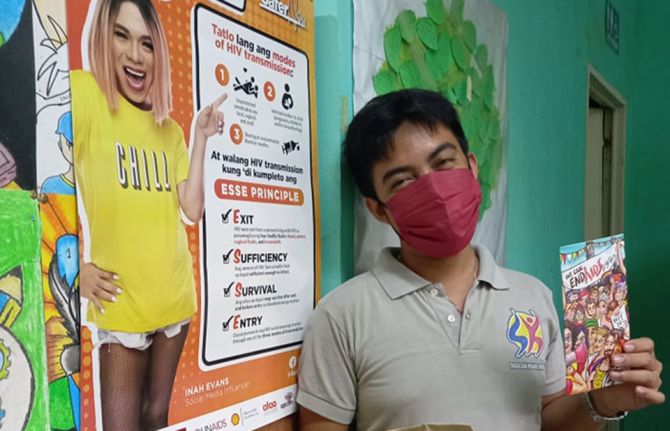
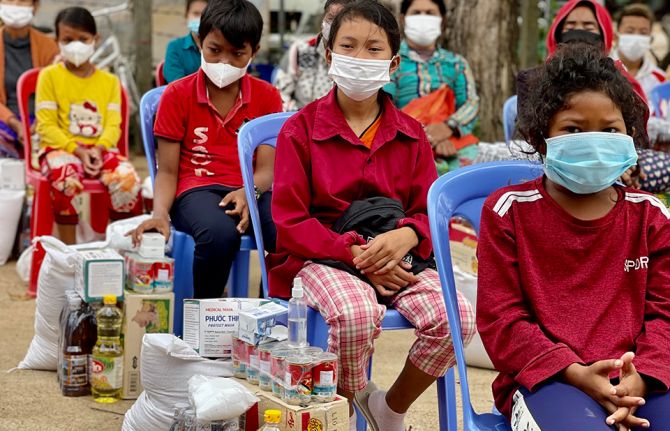
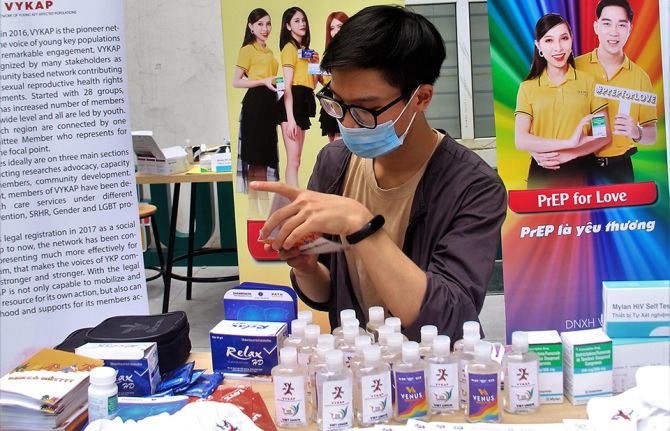
Feature Story
Networks led by young people in Asia and the Pacific find ways to adapt to COVID-19 and deal with uncertain futures
09 February 2022
09 February 2022 09 February 2022Health systems and communities have been pushed to the breaking point by the COVID-19 pandemic, a pandemic that the world was woefully unprepared for. Two years on, networks of key populations and people living with HIV are still at the forefront of the COVID-19 response, working to ensure that communities have access to timely and undisrupted HIV services. Among them is Youth LEAD, the network of young key populations in Asia and the Pacific, which in 2020 established the YKP COVID-19 Emergency Relief Fund to support initiatives led by young people in Asia and the Pacific.
One of the beneficiaries is Ya_All, an organization for young lesbian, gay, bisexual, transgender and intersex (LGBTI) people based in Manipur, India. “The second COVID-19 wave hit north-east India really hard, as it did across the country. We saw health-care systems collapse in front of our eyes. This greatly affected our work as we saw more and more young key populations experience delays in accessing HIV prevention services and saw an increase in mental health issues,” said Sadam Hanjabam, the founder and Chief Functionary of Ya_All. Thanks to the YKP COVID-19 Emergency Relief Fund, Ya_All supported 300 young LGBTI people and members of other key populations to access telecounselling services in five districts to help them with depression and other mental health issues.
Since the outset of the COVID-19 pandemic, the YKP COVID-19 Emergency Relief Fund has helped organizations led by and serving young people implement programmes that ensured young key populations and people living with HIV were not left behind in the HIV and COVID-19 responses. This included providing essential food and supplies of personal protective equipment, information on HIV and COVID-19 prevention and continued access to HIV prevention and treatment services, including mental health services. It also included establishing harm reduction programmes, distributing seed funding for businesses led by transgender people, providing housing and supporting digital and peer-led initiatives.
Funded through the Robert Carr Fund, the AIDS Health Care Foundation and the UNAIDS Regional Support Team for Asia and the Pacific, the YKP COVID-19 Emergency Relief Fund has supported more than 20 projects from 15 organizations led by young people across the region, and has made a considerable difference to the lives of young key populations.
The Viet Nam Young Key Populations Network is one of the beneficiaries of the fund in Viet Nam. Even though the country was in complete lockdown for a substantial period, with a seed grant the network managed to produce HIV and sexual and reproductive health and rights digital educational content for young people at risk of HIV, distributing harm reduction materials to 15 provinces across the country.
Similarly, YPEER Pilipinas, another beneficiary of the fund, trained 1000 young people on HIV combination prevention strategies and screened more than 900 young people for HIV. With a small grant, they were able to scale up the #GetCondomPH Programme, which resulted in successfully distributing more than 11 000 condoms across the Philippines.
In Cambodia, KHANA has given mental health support training to more than 70 LGBTI leaders. The training accelerated ongoing mental health peer support to key affected populations who were experiencing mental health issues. “Online counselling sessions on how to cope with mental health issues were incredibly helpful. The YKP COVID-19 Emergency Relief Fund was an effective mechanism that allowed us to provide timely support to young people in need of HIV prevention and other health services,” said Phorng Chanthorn, Senior Coordinator at KHANA.
These few examples out of the many show that young people, communities and civil society play a crucial role in pandemic responses, helping HIV programmes rebound and adapt to COVID-19 rapidly. Still, these efforts have not been easy. “Youth networks are trying to find ways to recover, adapt and effectively lead in this new funding landscape that has resulted in greater competition for donor funding. Many programmes, including this one, showcase the impact and necessity of supporting youth-led HIV programmes and initiatives. However, it’s not enough,” said Vanessa Monley, Programme Officer at Youth LEAD.
In 2020, young people accounted for 26% of new HIV infections in Asia and the Pacific. In some countries, close to half of new HIV infections were among young people, and one in three members of young key populations do not know their HIV status.
“It is critical to find innovative ways to continue to scale up access to HIV services for young key populations in the context of COVID-19, ensuring that we do not give up achieved gains, and to respond to the additional issues that have come with the pandemic, such as mental health and social support issues. UNAIDS is fully committed to supporting responses led by young people and ensuring their sustainability as we work collectively to end AIDS by 2030,” said Taoufik Bakkali, Director, a.i., of the UNAIDS Regional Support Team for Asia and the Pacific.
Our work
Region/country
- Asia and Pacific
- Australia
- Bangladesh
- Bhutan
- Brunei Darussalam
- Cambodia
- China
- Democratic People's Republic of Korea
- Federated States of Micronesia
- Fiji
- India
- Indonesia
- Islamic Republic of Iran
- Japan
- Kiribati
- Lao People's Democratic Republic
- Malaysia
- Maldives
- Marshall Islands
- Mongolia
- Myanmar
- Nauru
- Nepal
- New Zealand
- Pakistan
- Palau
- Papua New Guinea
- Philippines
- Republic of Korea
- Singapore
- Solomon Islands
- Sri Lanka
- Thailand
- Timor-Leste
- Tonga
- Tuvalu
- Vanuatu
- Viet Nam
- Samoa

